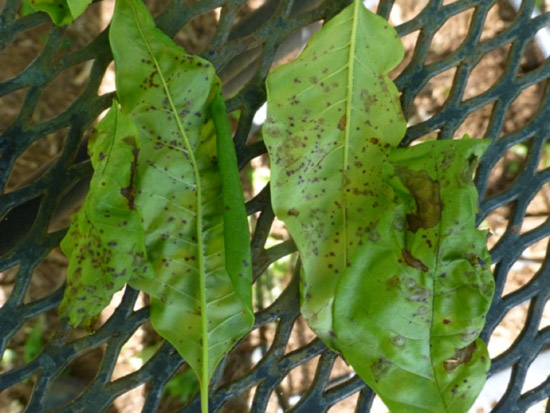Issue 4, May 20, 2013
Ash Anthracnose
This spring has presented us with extended periods of cool, wet weather. These conditions, when present during leaf expansion, often result in outbreaks of anthracnose. However, the plant clinic has received only a few reports of anthracnose occurring within the state. In fact, I received my first anthracnose (on ash) email of the year, earlier this week. Specifics of Ash anthracnose will be addressed in this article.
Ash anthracnose appears at about the same time we would expect to see spring frost damage. Unfortunately, anthracnose symptoms are similar to and often mistaken for frost damage. Symptoms tend to be more severe towards the bottom of affected trees, where moisture remains for longer periods of time. Symptoms include water-soaked spots that eventually enlarge and coalesce to form blotches. The spots quickly transition to a greenish brown. As leaves fully develop, and tissues dry, the spots and lesions tend to turn a tan color. In general, there may be some small (quarter-inch) spots, but usually the dead tissue appears as blotches that spread from the edge toward the midrib of a leaflet. Leaf distortion and defoliation are also commonly observed. The fungus can also infect the leaf petioles, resulting in defoliation without apparent infection of the leaf blades. In such cases, closer inspection usually reveals anthracnose lesions on the petioles.


Some important things to remember about anthracnose:
- The injury caused by anthracnose is mostly considered to be cosmetic. Anthracnose may contribute to plant stress, but is not known to kill trees.
- Disease severity will vary from year to year and is highly dependent on weather conditions. This disease infects newly emerging leaves in cool, wet weather. In years in which severe infection and defoliation occur, the tree will produce a second flush of growth. This commonly occurs in warmer and drier weather, where new infections are less likely to occur.
- Fungicides are not recommended for this disease. The damage is mostly cosmetic and usually doesn't justify the cost of treatment. Additionally, fungicides are preventative treatments that protect new growth. They will not cure infections on current leaves.
- Treatments should focus on reducing overall tree stress, with sound cultural practices. Provide water in periods of extended, dry weather. Fertilize in the fall.
For More information on Ash Anthracnose consult RPD No. 621 Anthracnose Diseases of Shade Trees (Travis Cleveland)
Author:
Travis Cleveland